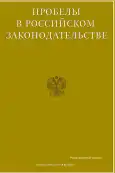Кибертерроризм в молодежной среде: основные причины и методы противодействия
- Авторы: Чочаев Т.Х.1
-
Учреждения:
- Краснодарский университет МВД России
- Выпуск: Том 16, № 5 (2023)
- Страницы: 201-205
- Раздел: Общетеоретические, уголовно–правовые и иные проблемы противодействия экстремизму и терроризму. Проблемы профилактики экстремизма и терроризма
- URL: https://journal-vniispk.ru/2072-3164/article/view/250168
- EDN: https://elibrary.ru/LZLLGJ
- ID: 250168
Цитировать
Аннотация
Целью данного исследования являются вопросы вовлечения молодежи в деструктивные идеологии и противоправную деятельность. Вне зависимости от возраста люди имеют доступ к современной технике, способной выходить в интернет и выполнять определенные задачи. У молодежной аудитории повышена группа риска, так как их легко могут завербовать, например, террористы. Террористы распространяют дезинформацию, запугивают население, создают панику, стараются создать атмосферу беспомощности. Терроризм имеет политический характер, но может действовать не только в политической, но и социальной, психологической, экономической сферах. Киберпространство помогает выполнить такие задачи быстро, с минимальным риском быть пойманным. Террористы поддерживают связи друг с другом, общаются, вербуют новых членов, осуществляют управление группами, распространяют экстремистские материалы также при помощи сети интернет. Большинство сфер жизни, включая экономику, постепенно глобализируются и переходят в цифровой формат, это делает их более удобными и доступными, позволяет ускорить многие процессы и сделать их доступными из любой точки мира. Однако такая автоматизация несет не только прогресс, но и угрозу со стороны кибертеррористов. Целью кибертерроризма является дестабилизация политической обстановки, давление на органы власти, принуждение их принимать те или иные решения, выгодные террористам, а также угроза применения насилия с целью воздействия на принятие решений органами государственной власти.
Установлено, что внимание террористов в последние годы привлекают социальные сети, которые позволяют вступать с отдельными людьми или группами в прямой контакт, вести диалог, отстаивать свою позицию. Сети помогают им поддерживать связь с соратниками, вести подготовку атак. Подготовка, координирование и проведение террористических акций также может осуществляться через интернет при помощи специальных программ.
Полный текст
Открыть статью на сайте журналаОб авторах
Тамерлан Хусейнович Чочаев
Краснодарский университет МВД России
Автор, ответственный за переписку.
Email: sayfullah10021996@mail.ru
старший лейтенант полиции, преподаватель кафедры огневой подготовки, Северо-Кавказский институт повышения квалификации (филиал)
Россия, Нальчик, КБРСписок литературы
- Абазов И.С. О путях противодействия кибертеррористическим угрозам // Журнал прикладных исследований. 2022. Т. 2. № 6. С. 178-181.
- Амирова Д.К., Габдрахманова Р.И. Кибертерроризм как современная угроза безопасности граждан // Ученые записки Казанского юридического института МВД России. 2021. Т. 6. № 2 (12). С. 126-131.
- Гедгафов М.М. Меры противодействия кибертеррористическим угрозам в условиях глобализации информационного пространства // Пробелы в российском законодательстве. 2021. Т. 14. № 4. С. 112-115.
- Жуков А.З. Совершенствование инструментов противодействия киберртерроризму в современных условиях // Пробелы в российском законодательстве. 2021. Т. 14. № 5. С. 123-128.
- Кобец П.Н. Кибертерроризм - как важнейшая угроза национальной безопасности // Национальная безопасность и стратегическое планирование. 2022. № 1 (37). С. 23-28.
- Малаев А.Х. ОБ актуальных проблемах противодействия кибертеррористическим угрозам в условиях цифровой трансформации // Пробелы в российском законодательстве. 2022. Т. 15. № 4. С. 214-218.
- Теуважуков А.Х., Хитиева А.Ж. Совершение кибертеррористических преступлений в сети интернет: пути выявления и противодействия // Журнал прикладных исследований. 2022. Т. 1. № 9. С. 72-75.
- Хамурзов А.Т. Кибертерроризм: новые вызовы и меры противодействия // Журнал прикладных исследований. 2021. № 3-2. С. 74-77.
- Хачидогов Р.А. Кибертерроризм в глобальном информационном пространстве: новые вызовы и меры противодействия // Образование и право. 2021. № 6. С. 362-366.
- Цримов А.А. Особенности применения цифровых технологий в противодействии кибертерроризму // Пробелы в российском законодательстве. 2022. Т. 15. № 4. С. 145-148.
- Штоль В.В., Задохин А. Информационно-коммуникационные технологии и информационная безопасность России // Обозреватель. 2022. № 5-6 (388–389). С. 66-78.
Дополнительные файлы








